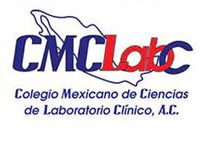Investigators at the Institute of Psychiatry, Psychology and Neuroscience, King’s College London, United Kingdom, found that fasting plasma glucose levels were increased in patients with first-episode psychosis (FEP). In addition, at illness onset, glucose tolerance was reduced, fasting plasma insulin levels were increased, and insulin resistance was increased, even when factors such as antipsychotic use, diet, and exercise, which are known to influence diabetes risk, were taken out of the equation.
“This is a wake-up call that we need to consider diabetes prevention right from the onset of schizophrenia,” study investigator Toby Pillinger, MRCP. The study was published online January 11 in JAMA Psychiatry.
Premature Death
Research shows that schizophrenia patients die 15 to 30 years earlier than the general population and that most of this premature mortality is due to causes unrelated to the central nervous system. It is estimated that rates of type 2 diabetes are up to threefold higher in schizophrenia patients compared to the general population, the researchers note.
It is unclear whether schizophrenia confers an inherent risk for glucose dysregulation in the absence of the effects of chronic illness and long-term treatment.
In a systematic review and meta-analysis of 16 case-control studies, the investigators examined whether glucose homeostasis was imparied in patients with FEP in comparision with control persons. The overall sample included 731 patients and 614 healthy control persons. FEP patients were physically healthy and had no illnesses that would affect glucose homeostasis.
After an oral glucose tolerance test, fasting plasma glucose levels were significantly elevated in patients with FEP (Hedges g = 0.20; 95% confidence interval [CI], 0.02 – 0.38; P = .03), as were plasma glucose levels (Hedges g = 0.61; 95% CI, 0.16 – 1.05; P = .007), in comparison with control persons, the researchers report.
The same was true for fasting plasma insulin levels (Hedges g = 0.41; 95% CI, 0.09 – 0.72; P = .01) and insulin resistance, as determined by homeostatic model assessment of insulin resistance (Hedges g = 0.35; 95% CI, 0.14 to 0.55; P = .001).
“With the exception of fasting glucose levels, these alterations were also seen when analyses were restricted to antipsychotic-naive and BMI-matched samples. When analysis was restricted to diet and exercise-matched samples, significance was maintained for raised fasting glucose levels in patients. All results remained significant when analyses were restricted to samples matched for race/ethnicity,” the authors write.
No significant differences between patients with FEP and control persons were seen in HbA1c levels (Hedges g = −0.08; CI, −0.34 to 0.18; P = .55), although this result should be interpreted with caution, owing to the small sample size used in this analysis.
Major clinical implications
“The results of our meta-analysis extend recent studies showing high rates of diabetes in patients with chronic schizophrenia by demonstrating that altered glucose homeostasis is present from illness onset,” the investigators note.
“The mortality gap between those with schizophrenia and the general population is large, and moreover, it continues to grow. In that context, the findings of our study have major clinical implications,” said Dr Pillinger.
“We would argue that a more holistic approach to the treatment of schizophrenia, combining both physical and mental health care, is required. Given that some antipsychotic drugs may worsen diabetic risk, there is a particular responsibility on the clinician to select an appropriate antipsychotic at an appropriate dose so as to limit this risk.
“There is also a need for clinicians to provide patient education regarding diet and exercise, ensure regular screening for diabetes, and offer prompt management to those who go on to develop diabetes,” he added.
In addition, “longitudinal studies examining the relative effectiveness of early interventions targeting a reduction in diabetic risk (both lifestyle based and pharmacological) in individuals with schizophrenia who exhibit evidence of early glucose dysfunction would be of value,” he said.
Reached for comment, Benjamin Ian Perry, MBBS, of Coventry and Warwickshire Partnership NHS Trust, United Kingdom, noted that the composition of this “interesting meta-analysis” is slightly different from one that his team conducted, which was published last year in Lancet Psychiatry and was reported by Medscape Medical News at the time.
“However, the results remain consistent with our findings across most measures of dysglycemia. This gives further weight to the conclusions of both meta-analyses,” said Dr Perry.
“There is now clear impetus for those looking after patients with psychosis, especially those younger patients in their first episode, to take utmost care in ensuring appropriate screening for physical comorbidity, particularly prediabetes. Care should also be taken in selecting a medication that doesn’t exacerbate or accelerate the risk of diabetes in such patients,” Dr Perry said.
The study had no commercial funding. Dr Pillinger and Dr Perry have disclosed no relevant financial relationships. One author has relationships with AstraZeneca, Autifony, BMS, Eli Lilly, Heptares, Janssen, Lundbeck, Lyden-Delta, Otsuka, Servier, Sunovion, Rand, and Roche.
Source: MedScape






































